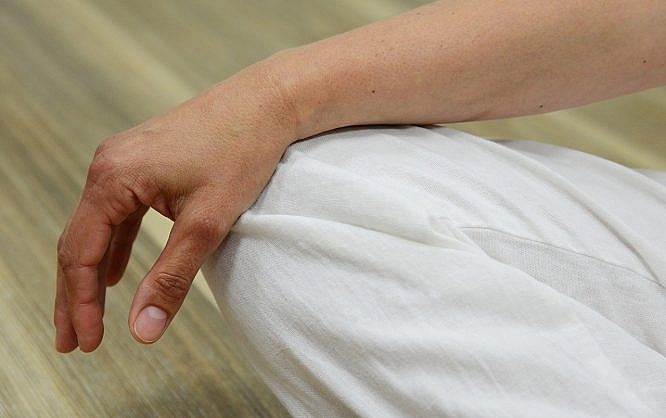If you are in the process of integrating awareness into your life, you should also do so on the professional level. In design, this helps you in many different ways.
Barely Anyone Draws the Right Conclusions Voluntarily
At the start of last year, I started integrating awareness exercises into my daily routine. In the beginning, I had massive difficulties doing that. After all, I was used to 100 percent busting my ass upon entering the office.
Only once I started getting physical symptoms of burnout, I came to the conclusion that I should not ignore my body's warning signs any longer. "I'll sleep when I'm dead. Sleep is for the weak." All of this has been a part of my mindset up to that point.
By now, I live a lot calmer, and surprisingly, I don't accomplish that much less. However, my whole approach has changed. The first thing I got rid of was multitasking. Today, I complete my tasks one by one. While working on one, I don't think about the next one either. One by one, step by step.
Awareness - You Can do it, You Just Have to Start.
Awareness is nothing you'd have to put effort into to learn it, even though that was what I expected initially, so I visited tons of courses. Awareness simply means focusing on the task at hand, and only on that. Essentially, it's about differentiation.
There's one ability you may have to learn first, though, and it's how to say no. No, I'm currently working on XYZ. No, I can't take care of that as well. No, no, no. No is immensely relaxing.
When focusing on a single thing, all other things, like your remaining tasks, become a lot less scary. Procrastination, creative embargos - all of this goes away after a while.
I mentioned differentiation. By that, I didn't just mean differentiating oneself from human time thieves, which you'll find in virtually every office, but the distinction from time thieves of any kind. When working on task A, put your smartphone away, turn on airplane mode, don't surf the web on the side, and close the Twitter and Facebook apps.
The First Exercise: Only You, the Computer, and a Task
Now, there's only you, your computer, and the task at hand. I recommend starting to practice awareness right there. Don't get distracted. If it does happen, stop the distraction, and move your focus back to the actual task. It's pretty logical that this type of focus leads to better and faster results. In that regard, awareness doesn't block you; it actually accelerates you.
Once you've gotten in some practice in awareness during design work, you may have gotten into the state known as
flow a few times. Now, you can expand your awareness exercises to other areas.
Other Attentive Behaviors That Improve Your Condition and Your Work Result
During conversations, no matter with who, put your smartphone to the side and just listen. You'll be surprised at the things you catch when you're doing nothing else. Listen very carefully, especially when it comes to customers. This doesn't only show appreciation, but professionality as well. All of that for doing nothing but being completely present and attentive.
When it comes to project time schedules, don't put yourself under pressure. Calculate your effort conservatively, but of course, not superabundantly. Keep in mind that you want to work on projects one by one, not simultaneously. Apparently, this comes with a longer duration of the individual project. During calculation, keep in mind that you only have a limited working time per day. Be attentive when it comes to yourself. You are the most valuable tool for earning your income. Don't break it, and maintain it regularly.
Before you start designing, define the goals you need to achieve, and agree on fixed success criteria with your client. This is a criterion of differentiation as well. Projects often become stressful when there are different ideas on what is included in the scope of service, and what isn't. This can be avoided by being attentive in that regard.
Be cautious when it comes to your toolbox. Don't jump from tool to tool because everything is cute and colorful. Tie yourself down, at least for the project, preferably in general. You've been using Photoshop for your layouts for ten years? Stick with it. Sketch may be better. Who knows? But do you really want to put in the learning effort, just to find out that Sketch is half a second faster? I've decided to stick to the tools that I master. After all, when walking, I always rely on the same motions as well, avoiding experiments.
Are you not ready for these insights? If that's the case, my "
No "Bullshit" Guide for Creative Workers" might be a good point to get you started.
Featured image by
solut_rai on
Pixabay 
